Photo: Estate of
1994 (1995) addresses this complex
Thomas Victor
both a part of the world and a sep-
123
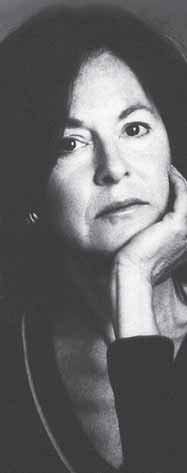
arate vantage point. As in a film’s
their humble lives with dignity.
montage, her voice threads togeth-
Thomas’s first job, as a laborer on
er disparate visions and experi-
the third shift, requires him to live
ences. Swarm (2000) deepens
in a barracks and share a mattress
Graham’s metaphysical bent, emo-
with two men he never meets. His
tional depth, and urgency.
work is “a narrow grief,” but music
lifts his spirits like a beautiful
THE POETRY OF VOICE
woman (forecasting Beulah, whom
t its furthest extreme, poetry
he has not yet met). When Thomas
of self obliterates the self if
sings
Ait lacks a counterbalancing
sensibility. The next stage may be a
he closes his eyes.
poetry of various voices or fictive
He never knows when she’ll
selves, breaking the monolithic
be coming
idea of self into fragments and
but when she leaves, he always
characters. The dramatic mono-
tips his hat.
logues of Robert Browning are
19th-century antecedents. The fic-
Louise Glück (1943- )
tive “I” feels solid but does not
One of the most impressive
involve the actual author, whose
poets of voice is Louise Glück. Born
self remains offstage.
in New York City, Glück, the U.S.
This strain of poetry often takes
poet laureate for 2003-2004, grew
subjects from myth and popular
up with an abiding sense of guilt
culture, typically seeing modern
due to the death of a sister born
relationships as redefinitions or
before her. At Sarah Lawrence
versions of older patterns. Among
College and Columbia University,
contemporary poets of voice or
she studied with poets Leonie
monologue are Brigit Pegeen Kelly,
Adams and Stanley Kunitz, and she
Alberto Rios, and the Canadian poet
has attributed her psychic survival
Margaret Atwood.
to psychoanalysis and her studies
Usually, the poetry of voice is
in poetry. Much of her poetry deals
LOUISE GLÜCK
written in the first person, but the
with tragic loss.
third person can make a similar
Each of Glück’s books attempts
impact if the viewpoint is clearly
new techniques, making it difficult
that of the characters, as in Rita
to summarize her work. Her early
Dove’s Thomas and Beulah. In this
volumes, such as The House on
volume, Dove intertwines biogra-
Marshland (l975) and The Triumph
phy and history to dramatize her
of Achilles (1985), handle autobio-
grandparents’ lives. Like many
graphical material at a psychic dis-
African Americans in the early 20th
tance, while in later books she is
century, they fled poverty and
more direct. Meadowlands (1996)
racism in the rural South for work
employs comic wit and references
Photo: Associated Press /
in the urban North. Dove endows
Library of Congress
to the Odyssey to depict a
124

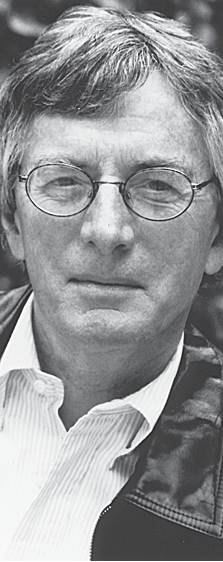
failing marriage.
THE POETRY OF PLACE
In Glück’s memorable The Wild
number of poets — these are
Iris (1992), different kinds of flow-
not groups, but nationwide
A
ers utter short metaphysical mono-
tendencies — find deep
logues. The book’s title poem, an
inspiration in specific landscapes.
exploration of resurrection, could
Instances are Robert Hass’s lyrical
be an epigraph for Glück’s work as
evocations of Northern California,
a whole. The wild iris, a gorgeous
Mark Jarman’s Southern California
deep blue flower growing from a
coastlines and memories of surf-
bulb that lies dormant all winter,
ing, Tess Gallagher’s poems set in
says: “It is terrible to survive / as
the Pacific Northwest, and Simon
consciousness / buried in the dark
Ortiz’s and Jimmy Santiago Baca’s
earth.” Like Jorie Graham’s vision
poems emanating from southwest-
of the self merged in the snow-
ern landscapes. Each subregion
storm, Glück’s poem ends with a
has inspired poetry: C.D. (Carolyn)
vision of world and self merged —
Wright’s hardscrabble upper South
this time in the water of life, blue
is far from Yusef Komunyakaa’s
on blue:
humid Louisiana Gulf.
Poetry of place is not based on
You who do not remember
landscape description; rather, the
passage from the other world
land, and its history, is a generative
I tell you I could speak again:
force implicated in the way its peo-
whatever
ple, including the poet, live and
returns from oblivion returns
think. The land is felt as what D.H.
to find a voice;
Lawrence called a “spirit of place.”
from the center of my life came
Charles Wright (1935- )
a great fountain, deep blue
One of the most moving poets of
shadows on azure seawater.
place is Charles Wright. Raised in
Tennessee, Wright is a cosmopoli-
Like Graham, Glück merges the
tan southerner. He draws on Italian
C
self into the world through a fluid
HARLES WRIGHT
and ancient Chinese poetry, and
imagery of water. While Graham’s
infuses his work with southern
frozen water — snow — resem-
themes such as the burden of a
bles sand, the earth ground up at
tragic past, seen in his poetic
the sea’s edge, Glück’s blue fresh
series “Appalachian Book of the
water — signifying her heart —
Dead,” which is based on the
merges with the salt sea of the
ancient Egyptian Book of the Dead.
world.
His works include Country Music:
Selected Early Poems
(l982);
Chickamauga (1995); and Negative
Blue: Selected Later Poems (2000).
Photo © Nancy Crampton
Wright’s intense poetry offers
125
moments of spiritual insight rescued, or rather
_____
constructed, from the ravages of time and cir-
History handles our past like spoiled fruit.
cumstance. A purposeful awkwardness — seen
Mid-morning, late-century light
in his unexpected turns of colloquial phrase and
calicoed under the peach trees.
preference for long, broken lines with odd num-
Fingers us here. Fingers us here and here.
bers of syllables — endows his poems with a
______
burnished grace, like that of gnarled old farm
The poem is a code with no message:
tools polished with the wear of hands. This hand-
The point of the mask is not the mask but the
made, earned, sometimes wry quality makes
face underneath,
Wright’s poems feel contemporary and prevents
Absolute, incommunicado,
them from seeming pretentious.
unhoused and peregrine.
The disparity between transcendent vision and
_____
human frailty lies at the heart of Wright’s vision.
The gill net of history will pluck us soon enough
He is drawn to grand themes — stars, constella-
From the cold waters of self-contentment we
tions, history — on the one hand, and to tiny tac-
drift in
tile elements — fingers, hairs — on the other.
One by one
His title poem “Chickamauga” relies on the read-
into its suffocating light and air.
er’s knowledge: Chickamauga, Georgia, on
_____
September 19 and 20, 1862, was the scene of a
Structure becomes an element of belief, syntax
decisive battle in the U.S. Civil War between the
And grammar a catechist,
North and the South. The South failed to destroy
Their words what the beads say,
the Union (northern) army and opened a way for
words thumbed to our discontent.
the North’s scorched-earth invasion of the South
via Atlanta, Georgia.
The poem sees history as a construct, a “code
“Chickamauga” can be read as a meditation on
with no message.” Each individual exists in itself, landscape, but it is also an elegiac lament and the unknowable outside its own terms and time, “not
poet’s ars poetica. It begins with a simple obser-the mask but the face underneath.” Death is
vation: “Dove-twirl in the tall grass.” This seem-
inevitable for us as for the fallen soldiers, the
ing idyll is the moment just before a hunter
Old South, and the caught fish. Nevertheless, poet-shoots; the slain soldiers, never mentioned in
ry offers a partial consolation: Our articulated dis-the poem, have been forgotten, mowed down like
content may yield a measure of immortality.
doves or grass. The “conked magnolia tree”
undercuts the romantic “midnight and magnolia”
THE POETRY OF FAMILY
stereotype of the antebellum-plantation South.
n even more grounded strain of poetry
The poem merges present and past in a powerful
locates the poetic subject in a matrix of
A
epitaph for lost worlds and ideals.
belonging — to family, community, and
changing traditions. Often the traditions called
Dove-twirl in the tall grass.
into play are ethnic or international.
End-of-summer glaze next door
A few poets, such as Sharon Olds (1942- ),
On the gloves and split ends of the conked mag-
expose their own unhealed wounds, resorting to
nolia tree.
the confessional mode, but most contemporary
Work sounds: truck back-up-beep, wood tin-
poets write with an affection that, however rue-
hammer, cicada, fire horn.
ful, is nonetheless genuine. Stephen Dunn
126

(1939- ) is an example: In his
Protestant minister in Pennsylva-
poems, relationships are a means
nia. Lee won acclaim for his books
of knowing. In some poets, respect
Rose (1986) and The City in Which I
for family and community carries
Love You (1990).
with it a sense of affirmation, if not
Lee is sensuous, filial — he
an explicitly devotional sensibility.
movingly depicts his family and his
This is not a conservative poetry;
father’s decline — and outspoken
often it confronts change, loss, and
in his commitment to the spiritual
struggle with the powers of ethnic
dimensions of poetry. His most
or non-Western literary tradition.
influential poem, “Persimmons”
Lucille Clifton (1936- ) finds
(1986), from his book Rose, evokes
solace in the black community. Her
his Asian background through the
colloquial language and strong faith
persimmon, a fruit little known in
are a potent combination. The mov-
the United States. Fruits and flow-
ing elegies to his mother of Agha
ers are traditional subjects of
Shahid Ali (1949-2001) draw on a
Chinese art and poetry, but unusual
dazzling array of classical Middle
in the West. The poem contains a
Eastern poetic forms, intertwining
pointed yet humorous critique of a
his mother’s life with the suffering
provincial schoolteacher Lee
of his family’s native Kashmir.
encountered in the United States
Malaysian-Chinese American
who presumes to understand per-
Shirley Geok-lin Lim (1944- ) pow-
simmons and language.
erfully contrasts her difficult family
Lee’s poem “Irises” (1986), from
in Malaysia with her new family in
the same volume, suggests that we
California. Chicana poet Lorna Dee
drift through a “dream of life” but,
Cervantes memorializes her harsh,
like the iris, “waken dying — violet
impoverished family life in
becoming blue, growing / black,
California; Louise Erdrich brings
black.” The poem and its handling
her unpredictable, tragicomic
of color resonate with Glück’s wild
Native-American family members
iris.
to vital life.
The title poem of The City in
LI-YOUNG LEE
Which I Love You announces Lee’s
Li-Young Lee (1957- )
affirmative entrance into a larger
Tragic history arches over Li-
community of poetry. It ends:
Young Lee, whose Chinese-born
father, at one time a physician to
my birthplace vanished, my
Mao Tse-tung, was later imprisoned
citizenship earned,
in Indonesia. Born in Jakarta,
in league with stones of the earth, I
Indonesia, Lee lived the life of a
enter, without retreat or help
refugee, moving with his family to
from history,
Hong Kong, Macao, and Japan
the days of no day, my earth
before finding refuge in the United
of no earth, I re-enter
States, where his father became a
Photo © Dorothy Alexander
127
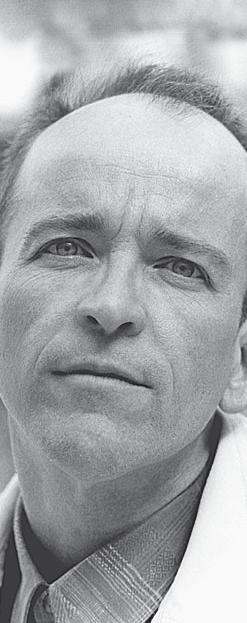
the city in which I love you.
the Grass” from Source (2001), a
And I never believed that the
dead rabbit provokes a philosophi-
multitude
cal meditation. This particular rab-
of dreams and many words were
bit, like a poem, is important in
vain.
itself and as a text, an “artfully
crafted thing” on whose brow
THE POETRY OF THE
“some trace / of thought seems
BEAUTIFUL
written.” The next poem in Source,
et another strain of intensely
“Fish R Us,” likens the human com-
lyrical, image-driven poetry
munity to a bag of fish in a pet store
Ycelebrates beauty despite, or
tank, “each fry / about the size of
in the midst of, modern life in all its
this line.” Like people, or ideas, the
suffering and confusion. Many poets
fish want freedom: They “want to
could be included here — Joy Harjo
swim forward,” but for now they
(1951- ), Sandra McPherson (1943- ),
“pulse in their golden ball.” The
Henri Cole (1965- ) — as the strains
sense of a shared organic connec-
of poetry are overlapping, not mutu-
tion with others is carried through-
ally exclusive.
out the volume. The third poem, “At
Some of the finest contemporary
the Gym,” envisions the imprint of
poets use imagery not as decora-
sweaty heads on exercise equip-
tion, but to explore new subjects
ment as “some halo / the living
and terrain. Harjo imagines
made together.”
horses as a way of retrieving her
Doty finds in Walt Whitman a per-
Native-American heritage, while
sonal and poetic guide. Doty has
McPherson and Cole create images
also written memorably of the trag-
that seem to come alive.
ic AIDS epidemic. His works include
My Alexandria (l993), Atlantis
Mark Doty (l953- )
(l995), and his vivid memoir
Since the late l980s, Mark Doty
Firebird (1999). Still Life With
has been publishing supple,
Oysters and Lemon (2001) is a
beautiful poetic meditations on art
recent collection.
MARK DOTY
and relationships — with lovers,
Doty’s poems are both reflexive
friends, and a host of communities.
(referencing themselves as art)
His vivid, exact, sensory imagery is
and responsive to the outer world.
often a mode of knowing, feeling,
He sees the imperfect yet vital
and reaching out. Through images,
body, especially the skin, as the
Doty makes us feel a kinship with
margin — a kind of text — where
animals, strangers, and the work of
internal and external meet, as in his
artistic creation, which for him
short poem, also from Source,
involves a way of seeing.
about getting a tattoo, “To the
It is possible to enjoy Doty by fol-
Engraver of My Skin.”
lowing his evolving ideas of com-
munity. In “A Little Rabbit Dead in
Photo © Miriam Berkley
128
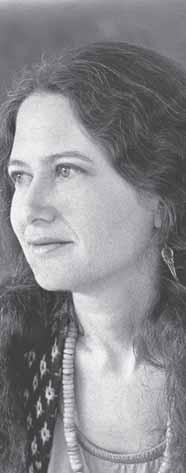
I understand the pact is mortal,
eral and seemingly simple observa-
agree to bear this permanence.
tions that are also meditations,
such as these lines from “Throwing
I contract with limitation; I say
Salt on a Path” (1987): “Shrimp
no and no then yes to you, and sign
smoking over a fire. Ah, / the light of
a star never stops, but travels.”
— here, on the dotted line —
Shoveling snow, he notes: “The salt
for whatever comes, I do: our time,
now clears a path in the snow,
expands the edges of the uni-
our outline, the filling-in of our
verse.”
details
(it’s density that hurts, always,
Jane Hirshfield (l953- )
Jane Hirshfield makes almost no
not the original scheme). I’m here
explicit references to Buddhism in
for revision, discoloration; here to
her poems, yet they breathe the
fade
spirit of her many years of Zen
meditation and her translations
and last, ineradicable, blue. Write
from the ancient court poetry of
me!
two Japanese women, Ono no
This ink lasts longer than I do.
Komachi and Izumi Shikibu.
Hirshfield has edited an anthology,
THE POETRY OF SPIRIT
Women in Praise of the Sacred: 43
spiritual focus permeates
Centuries of Spiritual Poetry by
another strand of contempo-
Women (l994).
Arary American poetry. In this
Hirshfield’s poetry manifests
work, the deepest relationship is
what she calls the “mind of indirec-
that between the individual and a
tion” in her book about writing
timeless essence beyond —
poetry, Nine Gates: Entering the
though linked with — artistic beau-
Mind of Poetry (1997). This orienta-
ty. Older poets who heralded a spir-
tion draws on a reverence for
itual consciousness include Gary
nature, an economy of language,
JANE HIRSHFIELD
Snyder, who helped introduce Zen
and a Buddhist sense of imperma-
to American poetry, and poet-trans-
nence. Her own “poetry of indirec-
lator Robert Bly, who brought an
tion” works by nuance, association
awareness of Latin American surre-
(often to seasons and weathers,
alism to U.S. poetry. In recent
evocative of world views and
times, Coleman Barks has translat-
moods), and natural imagery.
ed many books of the 13th-century
Hirshfield’s poem “Mule Heart,”
mystic poet Rumi.
from her poetry collection The
Spiritually attuned contemporary
Lives of the Heart (1997), vividly
U.S. poets include Arthur Sze
evokes a mule without ever men-
(1950- ), who is said to have a Zen-
tioning it. Hirshfield drew on her
like sensibility. His poems offer lit-
Photo © Jerry Bauer
memory of a mule used to carry
129
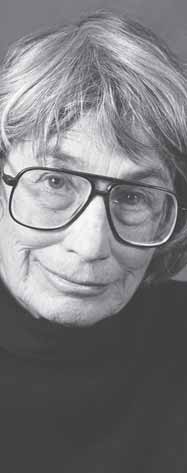
loads up steep hills on the Greek
tity. Transcendentalism and agrari-
island of Santorini to write this
anism focused on America’s rela-
poem, which she has called a kind
tion to nature in the 19th and early
of recipe for getting through a dif-
20th centuries.
ficult time. The poem conjures the
Today environmental concerns
reader to take heart. This humble
inform a powerful strain of ecologi-
mule has its own beauty (bridle
cally oriented U.S. poetry. The late
bells) and strength.
A.R. Ammons was one recent
progenitor, and Native-American
On the days when the rest
poets, such as the late James
have failed you,
Welch and Leslie Marmon Silko,
let this much be yours —
never lost a reverence for nature.
flies, dust, an unnameable odor,
Contemporary poets rooted in a
the two waiting baskets:
natural vision include Pattiann
one for the lemons and passion,
Rogers (1940- ) and Maxine Kumin
the other for all you have lost.
(1925- ). Rogers brings natural his-
Both empty,
tory into focus, while Kumin writes
it will come to your shoulder, <










